
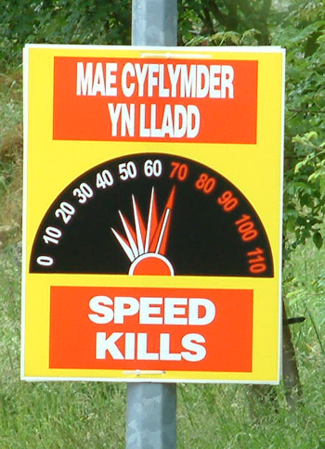 If you believe the road safety posters and campaigns, you will know that 'Speed Kills' (or in Welsh, 'Mae cyflymder yn lladd'!). But is this message leading us into a false sense of security?
If you believe the road safety posters and campaigns, you will know that 'Speed Kills' (or in Welsh, 'Mae cyflymder yn lladd'!). But is this message leading us into a false sense of security?
How many people would still be alive today if the message was 'Any Speed can Kill'?
If you are inattentive or careless, you could kill someone at two mph as 'easily' as at 90 mph.
And how many people would think twice if the message paced driving – 'Speed Thrills, but it also Kills'?
Are you a victim of the 'speed kills' speed trap?
It's easy to fall into the trap of believing that your speed is safe if you only consider what you can see ahead or because you are keeping within the speed limit, but is that enough?
A basic rule of defensive driving tells us to keep within speed limits and consider what we can see. But we also need to consider what we can't see and what we could reasonably expect to happen.
Raise your awareness by reading the information in this section, and then start driving at a safe speed - regardless of whether it's fast or slow.
If you are involved in an accident, the faster your speed, the more likely you are to kill someone or be killed yourself.
The video below is from a controversial road safety campaign from Northern Ireland in 2007 carried the message 'The faster the speed, the bigger the mess'. (Warning: This video contains graphic scenes of crash that could be disturbing for some people).
Despite the depiction in the horrific video above, it's not the speed that kills you - it's the sudden reduction of speed and transference of energy.
So, with the information above in mind, maybe the safety slogans should perhaps read: 'Impact Kills'.
So how do we square this idea with a notion of safe speed?
The DriverActive online course discusses the importance of keeping a safe space around your vehicle. The prevailing conditions determine this space, and it must be big enough for your vehicle to stop safely in the event of both foreseeable and unexpected occurrences.
Given this information, we can now argue that: Impact Due To Insufficient Space Kills
Because the driver can (mainly) control the space around the vehicle, the next logical argument for our slogan is that: 'Impact, Due To Insufficient Space, Caused By The Actions of The Driver, Kills'.
OK - it's getting a bit wordy for a slogan!
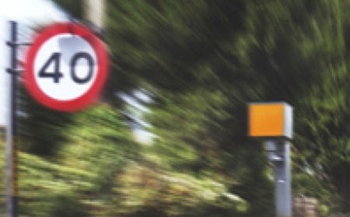 But ultimately, speed and space are the two variables you can control. When you control these well, you will keep yourself and those around you safe and alive at any speed.
But ultimately, speed and space are the two variables you can control. When you control these well, you will keep yourself and those around you safe and alive at any speed.
At DriverActive, we certainly don't condone breaking speed limits, but there are roads in the UK where 130* mph would be safe in certain conditions*. But it's not the road or the speed that determines safety – it's the driver.
*High speeds are not only illegal on public roads, they are socially irresponsible. Even if there was an argument that a racing driver in a sports car could drive safely at high speeds on a motorway, we live in an age where climate change poses an existential threat. The faster the speed the higher the emmisions. However, the top speed recorded on the M1 was 185 mph – see this Autocar article.
You can kill a toddler at speeds as low as a few miles per hour. Whatever your speed, you must anticipate likely happenings and leave enough space to cope. Most accidents happen in built-up areas – that's why they have the lowest speed limits - lots of traffic, but not much space. In built-up areas, there are also a lot of soft targets (literally). These 'targets' are called pedestrians.
If a speed of two or three mph can kill a pedestrian, what do you now understand the term 'Speed Kills' to mean?
Perhaps one of the biggest speed traps is that which leads drivers to think that they pose no danger when driving slowly.
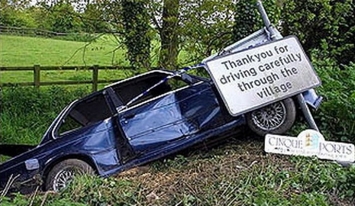 Some of the worst 'speeding' I've seen has been by drivers of cars sporting regalia from 'better driving' organisations - Advanced Drivers! Safety is not just about driving skill; it's more about 'driving attitude'.
Some of the worst 'speeding' I've seen has been by drivers of cars sporting regalia from 'better driving' organisations - Advanced Drivers! Safety is not just about driving skill; it's more about 'driving attitude'.
The 'good driver' trap installs beliefs that cause people to think they are infallible. But the problem is that impact kills good drivers too.
Advanced driver training courses, especially police courses, will often teach 'expert' handling skills, the ability to 'balance' the car and reduce the risk of skidding, smooth out gear changes, and brake on the 'threshold' thus gaining the maximum stopping effect, etcetera. But these skills are only safe when used appropriately
You may be a good driver - perhaps the best - but the problem is, you are sharing the road with a whole load of lesser-skilled drivers. If you drive fast, you might be able to stop - but will they?
Take your good driving skills to a race track to enjoy a few natural adrenalin-packed laps in an appropriate environment.
Police survey
These are some of the excuses offered by drivers caught by speed cameras. Some people believe they will not get a fine if they have a story explaining their behaviour.
These are actual excuses given to the police:
I passed out after seeing flashing lights, which I believed to be UFOs in the distance. The flash of the camera brought me around from my trance.
I was in the airport's flight path, and I believe the camera was triggered by a jet overhead, not my car.
I had a severe bout of diarrhoea and had to speed to a public toilet.
A strong wind behind my car pushed me over the limit.
I had to rush my dying hamster to the vet
I did not see the camera
My friend had just chopped his fingers off, and I was rushing the fingers to the hospital.
The vibrations from the surfboard I had on the roof rack set off the camera.
There was a suspected case of foot and mouth, and I had to rush to see the cow concerned.
A violent sneeze caused a chain reaction where my foot pushed down harder on the accelerator.
The only way I could demonstrate my faulty clutch was to accelerate madly.
My foot slipped on the accelerator
My brakes did not respond as I approached the camera
We set many 'speed traps' for ourselves by skewing our attitudes towards the way we drive. There are undoubtedly more than we can think of at DriverActive, excuses, delusions and fantasies.
 Most vehicles, especially at the top of the range, have design capabilities far in excess of the average driver's skill. But the car can only do so much. Even in the safest vehicles, a driver can still panic and lose control.
Most vehicles, especially at the top of the range, have design capabilities far in excess of the average driver's skill. But the car can only do so much. Even in the safest vehicles, a driver can still panic and lose control.
When you lose control in a 'safe' car, the secondary safety features will protect you to a degree, but what about other road users? The people you crash into?
Volvo's are amongst the safest cars on the road, but the driver of the one in the picture was killed after it spun through air and smashed into a first-floor flat - his nine-year-old son, a passenger survived, but his life won't be the same without his dad.
Secondary safety is the vehicle's built-in protection - crumple zones, collapsible steering columns, airbags, etc.
Secondary safety might save you - just like it saved the nine-year-old in this crash with just cuts and bruises - but a car's safety features can't protect you from the mental scars and post-accident stress which lives with some people for a lifetime.
Although modern cars are built with impact-absorbing materials and technology, kids on bikes are still made out of what they always were, good old skin and bone with a few soft internal bits.
Primary safety is what you do.
It doesn't matter how safe your car is - It's not idiot-proof!
 Many drivers (and passengers) are killed in single-car accidents on clear roads. By all means, drive fast (within the speed limit) if that is what you want to do - but do it intelligently.
Many drivers (and passengers) are killed in single-car accidents on clear roads. By all means, drive fast (within the speed limit) if that is what you want to do - but do it intelligently.
Changes to road design on well-used major routes have helped reduce casualty rates. However, other roads have not seen the same level of accident reduction. Make sure your speed matches the type of road you are on.
Motorways are pretty straight and can safely facilitate 70 mph (subject to traffic volume). But even empty motorways can have debris on the road surface from burst truck tyres, etc. Not a major problem at 70 mph but extremely dangerous at 100 mph.
Country roads are rarely clear - stray animals, mud, farm vehicles, damaged surfaces, water, ice, potholes, etc.
Have you ever seen a horse or a cow that has been hit by a car? Or the resultant wreckage that the driver is cut from?
There is nothing wrong with driving fast on a clear road, but rural roads are rarely guaranteed to be clear in the UK.
Any fool can end up in a field!
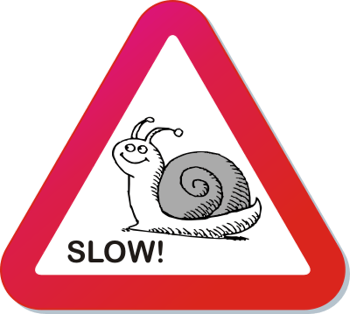 You might have driven on roads that seem to be OK for 40 or 50mph but which are restricted to 30mph.
You might have driven on roads that seem to be OK for 40 or 50mph but which are restricted to 30mph.
But...
Unless you know the history of a particular area and are an expert in making sense of such data, how do you know the limit is too low. Where is your evidence?
You can't rely on what you can see 'in the moment' alone.
For example, the speed limit might be in place to protect the local community from air pollution (car emissions) – how would you see that?
Being a good driver doesn't make you psychic - the road cloud be a significant accident black spot.
If you are local and feel a limit is unreasonable - gather some data, form a pressure group and fight to change it.
What is fast?
Two miles per hour can be enough to kill.
This brings us back to the 'Speed Kills' trap.
Many towns now have 20mph zones. You don't want to run over a child, but at 20 mph, there is a good chance that they will survive if you do (and more chance that you will avoid them!). At 35 mph, they will probably die.
Town and city journeys are often short. An extra ten mph will make little or no difference to your journey time, although you might get to the next red light a bit quicker!
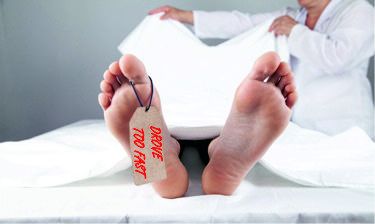 An aeroplane full of passengers is safe at 400mph in the air, but if it hits the ground at that speed - everyone dies. This is why planes slow down and ensure the runway is clear before landing - to avoid impact.
An aeroplane full of passengers is safe at 400mph in the air, but if it hits the ground at that speed - everyone dies. This is why planes slow down and ensure the runway is clear before landing - to avoid impact.
On the other end of the speed scale, as we suggested earlier, a driver who hits a toddler while reversing at two mph (or less) on a driveway could kill.
Remember - It's not the speed, it's the impact!
As a safe driver, you will reduce the risk to yourself and others by reducing the impact risk.
Doubling your speed quadruples the kinetic energy of your vehicle. In simple terms, this means the ability to inflict damage is 4x greater.
There's nothing wrong with speed - it can sometimes get you there quicker on fast roads, and it can be fun, but there is a massive problem when the speed is not appropriate for the conditions.
By all means, go a bit quicker on the safe bits of the open road*, if you can be sure that it's clear and will remain clear* BUT slow down in towns - your average journey time will be the same, you will be more relaxed, and the kids on the street will enjoy more birthdays!
*Be aware that more people die on rural roads. See this info from RoSPA.
If you must kill something - kill your speed in town.
Hit by a car at:
20 mph, 3% of pedestrians will die– 97% will survive
35 mph, 50% of pedestrians will die – 50% will survive
mph, 90% of pedestrians die – 10% will survive
50 mph, more than 99% of pedestrians will die – fewer than 1% will survive
 The author's solution would be to have no speed limits at all. However, limits are necessary to protect pedestrians and drivers who might be old or inexperienced. And although it's not, perhaps politically correct to say so, drivers who are ignorant or stupid.
The author's solution would be to have no speed limits at all. However, limits are necessary to protect pedestrians and drivers who might be old or inexperienced. And although it's not, perhaps politically correct to say so, drivers who are ignorant or stupid.
I like to drive fast but choose to live in and enjoy the benefits of a collective society (the Western World). In this context, how could I justify my right to kill myself by driving too fast? Some poor emergency worker will have to scrape me up!
There are thousands of speed traps. We each invent our own. For many, this is a fact of driving life.
Just this once
I'll be late if I don't hurry up
If I can just pass this idiot in front
There are no police around
You know what your traps are. All I suggest is that you become more aware of them. If you think you don't need this advice, you could find that going too fast is dead easy.
It's your prerogative to agree or disagree with the views about speeding expressed here. But PLEASE REMEMBER, whoever you are and whatever you drive - that it's not only high speed that kills…
Any speed can kill.